Sick Of Grocery Shopping? Grow Your Own Food & Save Money!
by Admin Joe
updated – Jan 18th 2021
I get it. Purse strings are already tight nowadays and getting tighter by the minute. I can definitely relate to this. How great would it be to put a line through “food” on your weekly shopping list? This will surely help you when it comes to the already mountainous household expenses that we all have to pay.
I can teach you how to do that. Maybe you can also make a little cash on the side selling your own fruit and vegetables too. You can earn money exploring other aspects of farming such as keeping chickens as well.
I can assure you that doesn’t take that much effort to grow your own food. Although, a lot of people waste money buying overpriced food from the supermarket anyway. This may be due to ease and convenience which is fair enough if you can afford to do that.
As a matter of fact, supermarket prices may surprise you. You could be coughing up more money than you think you should. The price drop was dramatic in my case to say the least when I first started gardening and growing food.
If you really excel at growing your own food then you may rarely need to use a supermarket ever again! No more standing in long queues in the hustle and bustle of the supermarket. On top of that, imagine how much cash you could save!
By the end of 2015 there were over 119 million gardeners in the US alone (Statista). This is a dramatic increase from previous years and just goes to show you how popular gardening is. Why not jump on the bandwagon today and reap the rewards of growing your own food?

“We should all grow our own food and do our own waste processing, we really should.”
Bill Gates (Founder of Microsoft)
Hey look, it’s our old friend Bill Gates. You may have seen me use some of his famous lines before in my other posts. It turns out he has more pearls of wisdom to share, this time about gardening wouldn’t you know it?
Who would have thought it? Growing fruit and vegetables seems about as far away as you can get from building computer technology. But here we are.
Not only does he talk about growing food, he also talks about taking care of our trash. We can all do our part for the environment, growing your own food can help you accomplish this.
If you’re going to take anybody’s word about anything then it might as well be someone highly successful like Mr Gates.
Let me now walk you through exactly how we’re going to execute your plan to grow delicious, free fruits and vegetables.
I will start you on the path to eating your very own healthy home-grown produce. Let’s take a look at how simple fruit and vegetable gardening really is.
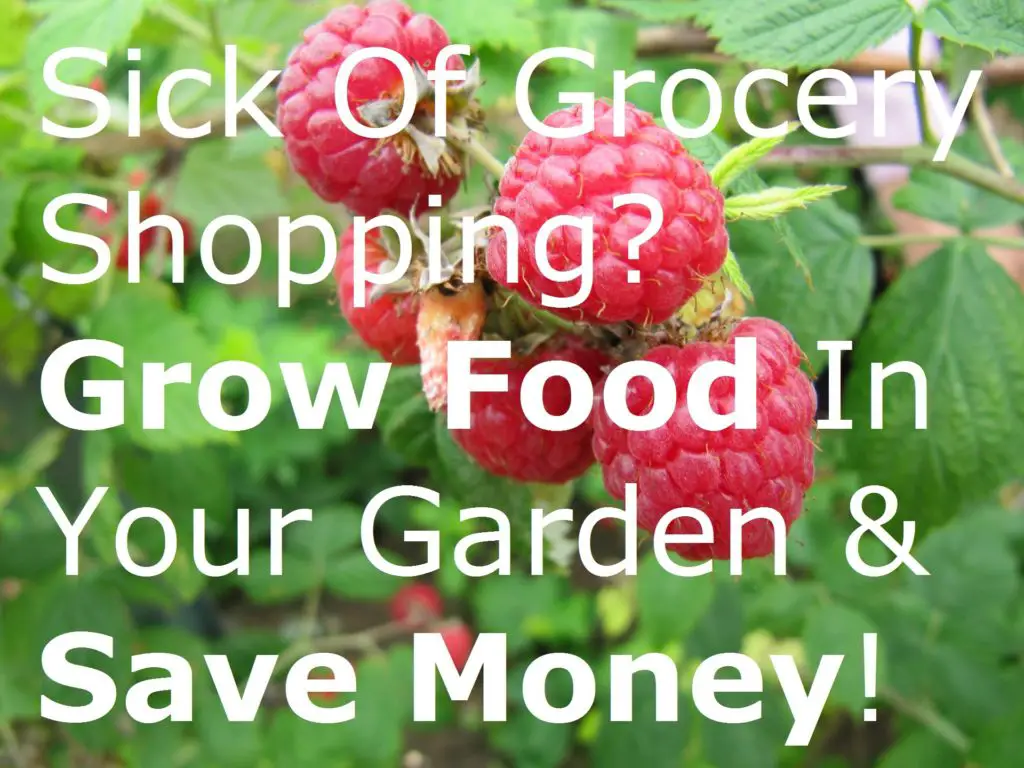
What are the benefits of home-grown garden food?
Why should I try gardening? Why should I grow my own food? We’ve already talked about how cheap growing your own food is. Let’s focus on something else to admire it for. One big pro to all of this is the freshness you get from the food in your garden.
In the end, your home-grown food will be even fresher than that of the supermarket food. Your produce will not be sitting on the store shelf for days or even weeks on end sometimes.
Do home-grown fruit & vegetables taste better?
Your fruit and vegetables should taste so much better. Bear in mind the lack of chemicals and the fact that you will be able to harvest them fresh from your garden.
It is way better than having them sitting on a supermarket shelf for several days. Who want’s that?
This is true in the same way that fresh home-made bread always tastes so much better than store-bought. Lots of people I know prefer it to the mass-produced, square-cut supermarket bread.
The analogy works fine as long as you follow the recipe correctly unlike myself. Don’t forget to add the yeast DUH!
Is fruit & vegetable gardening good for the soul?
From my experience, it’s a great feeling to know that you have nurtured and looked after something. You can watch fruit and vegetables grow because of your efforts.
Plants are pretty low maintenance. It’s far less stress than caring for a pet or a child (take it from me).
It’s obvious to see first hand how rewarding gardening is. You will also get a huge sense of achievement from your work as I have. People who try it may even grow (pun very much intended) to enjoy gardening as a hobby.
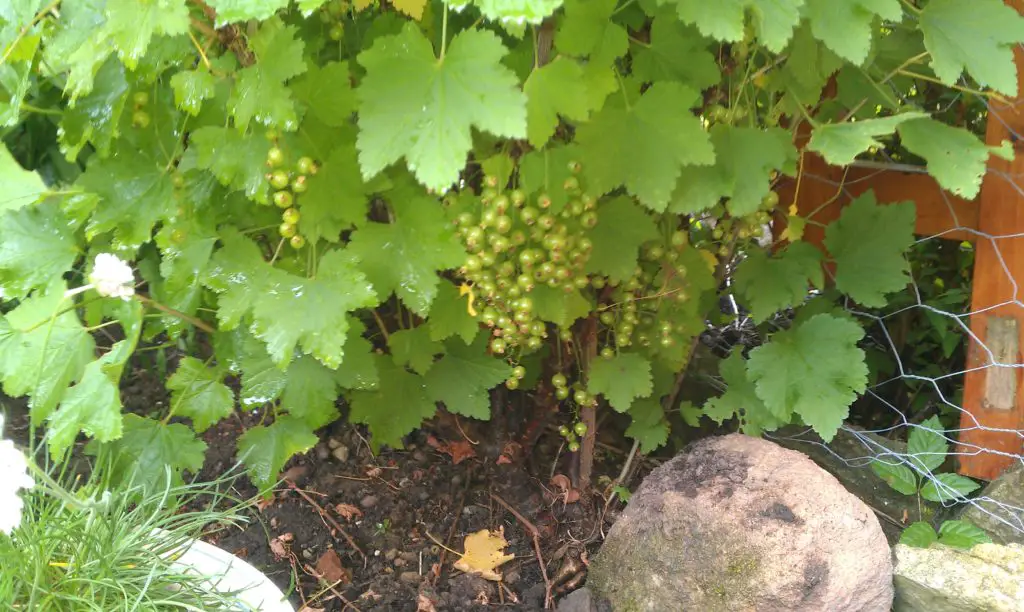
Do I need to have any gardening experience?
You don’t need to have green fingers in order to start growing food. I knew next to nothing about gardening at the start and it worked out fine for me (after some trying).
Who can grow their own food? Gardening is pretty easy to learn and it’s something most physically able people can do. Packets of seeds have all the relevant instructions on them so you shouldn’t have that many problems.
Hundreds of years ago before the age of supermarkets, most people used to grow their own food. This essentially means that gardening is a skill that anybody can pick up. It’s in the blood of our ancestors going all the way back to the neanderthals.
How can I learn more about fruit & vegetable gardening?
You may know someone who is willing to teach you the basics tips of growing fruit and vegetables. If they accept your request for help then they can mentor you.
If this is not case then maybe you can read books about gardening (this has worked best for me). Alternatively, glance through a blog post (wink wink) or watch a YouTube video about gardening. Try not to let all the funny cat videos distract you!
You will likely make some mistakes along the way. Learning about gardening through trial and error may suit you best. People often fail forwards, just like lots of other things in life.
I wouldn’t put all your eggs in one basket when it comes to growing food. Under certain conditions, some crops are likely to fail no matter how good you are at gardening.
Things like this happen to me to this day and also many times in the past so don’t let mistakes discourage you. You don’t want to solely rely on your plants for sustenance as you may starve and nobody wants that.
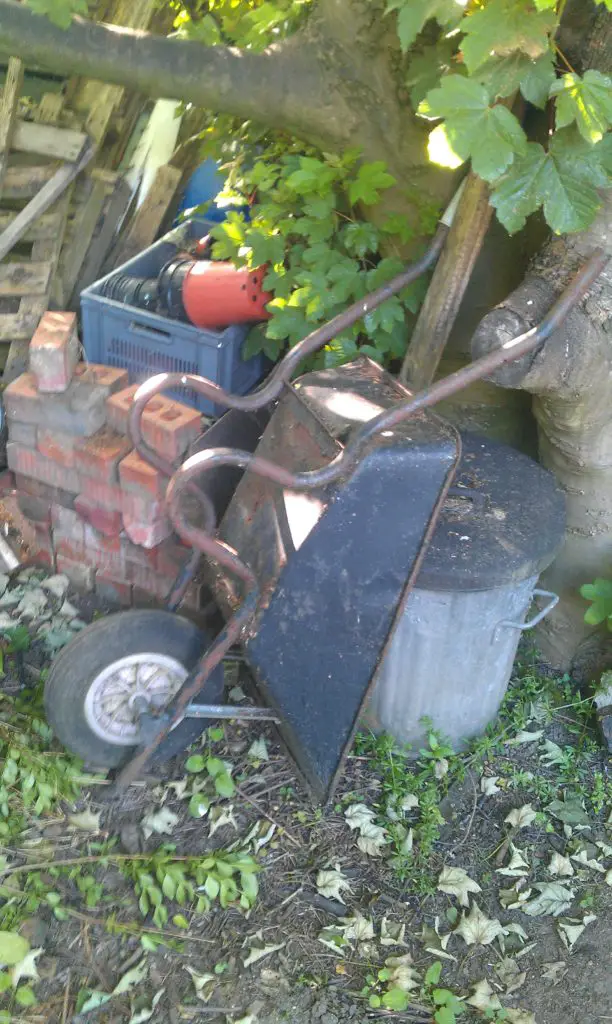
Can I grow whatever fruit or vegetable I want?
You can within reason, but it hinges on a few different factors. What food can I grow? In some parts of the world, certain fruit and vegetables simply won’t grow. This comes down to varying weather conditions.
What will grow in warmer climates won’t grow in colder climates, and vice versa. You will need to research this thoroughly before you waste your money investing in any plants or seeds.
You can buy some vegetables dirt cheap in supermarkets. Because of this, your focus may want to be on growing produce that is conventionally quite pricey to buy.
You should also try to grow produce that is not as readily available to everyday consumers. These are usually more exotic fruits (weather and climate permitting) and the like.
How do I plant my seeds?
How do I grow my own food? The instructions on the packet of seeds will tell you exactly when you should be planting your seeds.
Instead of buying seeds, you may have collected them naturally from an already existing plant. This is more cost-effective in any case.
Make sure the seed is deep enough to root properly. At the same time, it can’t be too deep that the stem will take a long time to reach the surface of the soil.
There is also the danger of birds and other pests digging up and eating your seeds. This is only really an issue if you don’t plant them deep enough.
You can use special ericaceous compost for boosted growth or just earth that you dig out of the ground. The latter will do fine and it’s free of charge. Here are some simple steps for planting a seed in a plant pot:
- Fill the plant container halfway with soil
- Place the seed on top of the soil, in the middle
- Top up the plant container with remaining soil so there is an inch of space under the brim
- Press the soil down firmly with your hands so that it is compacted
- Water the whole thing straight away
- Move the plant pot so that it is sitting in the sun somewhere in your garden
I suggest that you may want to keep your plants indoors if the weather is particularly poor. This is especially important seeing as this is their first year of life. It makes sense as young plants are the most vulnerable, similar to the animal kingdom.
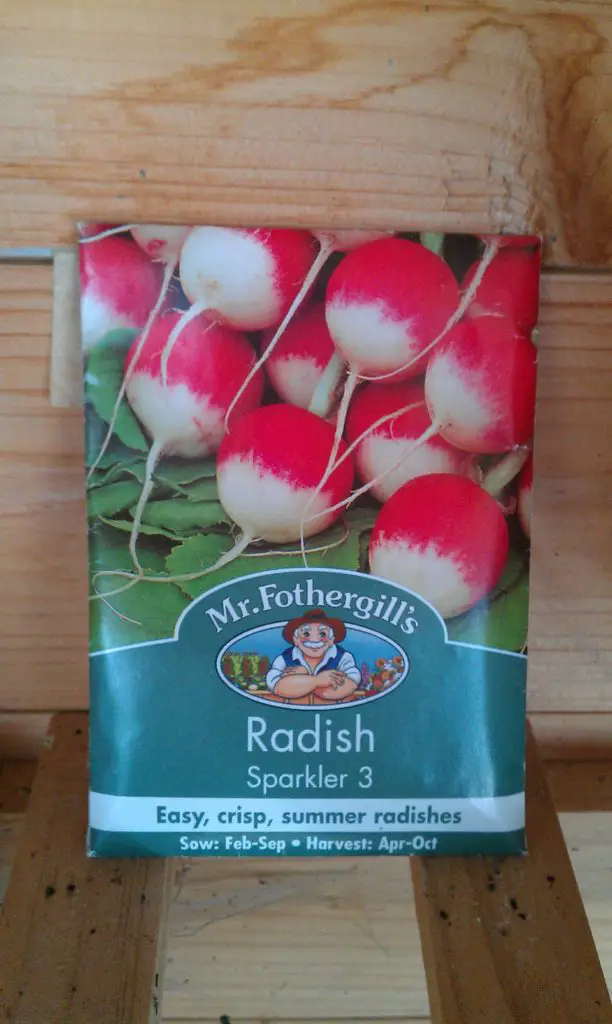
Which way up do I plant my seeds?
When you are ready to plant, you need to place the seeds/bulbs in the soil. Do this in a way so that the rounded end are pointing up into the sky.
In other words, this means the pointy end needs to be facing downwards into the earth. It would surprise you how many people get this wrong (including me at first).
This is where it gets confusing. It may be the opposite way around depending on the plant you are growing.
It’s not the end of the world if you get this wrong anyway. The stem will just need to take a 180-degree detour in order to reach the surface of the earth. This will only slow things down a little.
When do I plant my seeds?
If there isn’t any specific guidance for you to follow then I suggest you plant them in the Spring. You can plant them at a different time if you know what the plant is and exactly when the seeding process should begin.
When is the best time to grow my own food? I would avoid seeding in the Winter as harsh conditions will stifle or even kill early growth.
How long does a plant take to grow?
Be patient, it’s just a seed at the start so you won’t see results right away. It will take a few weeks at least before you see any little green shoots breaking through the surface of the soil.
What’s the next step after planting?
Like before, water to lock the soil in together tightly. This is so that the whole thing is sturdy in case of a sudden gust of wind or any other disturbance. You don’t want your plant being separated from the soil and ultimately dying while your back is turned.
Make sure that there is enough soil at the bottom of your container. The roots can really spread out this way, but at the same time don’t plant it too deeply.
Seeing as this is a new plant, you might want to make space for it in your garden in prime position of the sun. You will just have to play the waiting game when all this is done.
How do I grow climbing plants?
You can grow a climbing plant like ivy or french beans. If you do this you will need some sort of solid structure for it to bind to. It can’t just climb on to thin air. This can be:
- a wall
- a trellis
- garden canes
It can be any of these or something similar. You need to have this ready and in place the moment you plant the seed.
Try feeding and weaving the stems in to the structure. Do this up until it can latch on itself without your helping hands. It just needs to get a firm grip and then it should find its own path without your help.
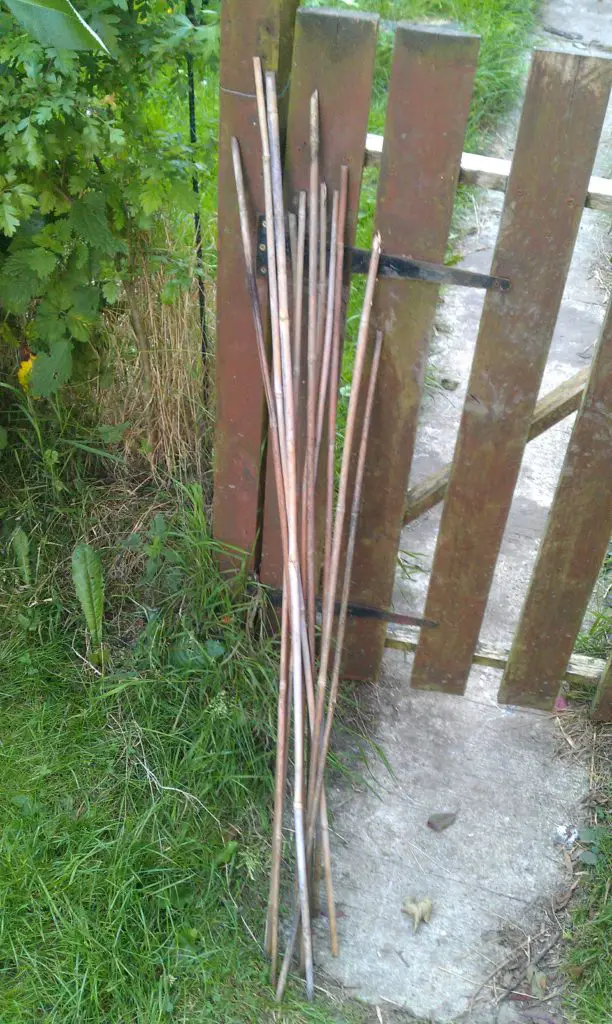
Why should I grow potatoes?
One of the best things to grow in my opinion are potatoes. Potatoes might not seem like very exciting vegetables but they come with many benefits.
They grow in most environments. Potatoes are also are a very filling vegetable to eat. You can cook and prepare them in a variety of different ways. You can eat them in a meal with lots of other foods too. They go together great with almost anything.
How do I protect potatoes from pests?
Potatoes are root vegetables so you will need to dig them up out of the ground when they are ready to harvest. A lot of people don’t like growing potatoes because of the threat of worms, insects and other pests eating away at them.
The worst thing is you won’t see or even know if it’s happening seeing as they’re deep underground in your garden. You won’t see what’s going on for a very long time at least.
Those damn creepy crawlies might be feasting on your potatoes while you’re blissfully unaware. It can be a little bit hit or miss so you need to time your harvest right.
It’s not really a massive problem if they do get partly eaten. I can hear your audible gasp through the internet right this very second. Stop clutching your pearls and let me explain.
You can dig them up, clean them off, peel them and cut out the holey parts leaving just the good bits. I accept that you will have to dice them up into abnormal shapes but who cares? They should still taste great.
How do I prepare potatoes?
I’m well aware that the task of cleaning all the dirt off your potatoes is time-consuming as well. This is one reason why people buy them from supermarkets instead.
Although, when it comes to taste and freshness, home-grown garden potatoes are the champion every time. Here are the steps that I take:
- Harvest your ripe potatoes
- Soak them in luke-warm water for a short while to aid cleaning and wait
- Scrub them thoroughly with a nail brush or scouring pad
- Rinse them once again and leave them on a rack to dry off a little
- Peel them
- Cut out any holes created by pests with a knife
- Dice the remaining pieces of potato into smaller pieces
What will my plants need?
Just your love … and a few other things. Your plants will require a fine balance of:
- sunlight
- ventilation
- earth
- water
- warmth
Not too much and not little. Mother nature will provide most of the essentials for your garden.
Remember to water your plants regularly but at the same time not to over-water them. However, you will know when they need water because the soil will look and feel very dry to the touch.
You can use plant food or hormone rooting treatment if your plants are struggling for growth. I would recommend that you avoid doing this unless they really need it.
You can judge this best by comparing the plant with other plants of the same type and age. You may have been growing multiple plants around the same time so this theory shouldn’t be too difficult to test out.
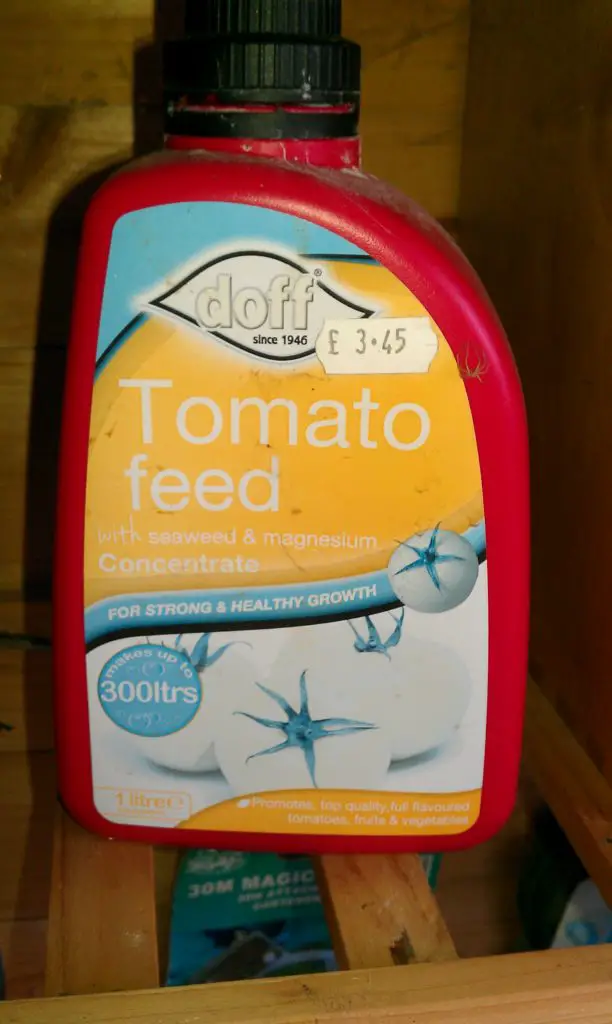
How much ventilation do plants need?
Plants need fresh air just like us humans. Problems could arise if your plants don’t get enough ventilation, particularly if you grow indoors. I’ve certainly made this mistake before.
If this is the case or if you grow food inside a greenhouse then ensure to leave at least one window slightly open.
Plants need carbon dioxide to produce oxygen. They can’t get at this gas if you close them off completely to the outside world.
Do gardeners need to worry about weather?
You can’t control the weather, but you can control how you react and adapt to it while gardening. The climate is always changing over time.
This means that seasons don’t always act as they’re supposed to during certain years. Dry Summers and harsh Winters can have a huge impact on the performance of your fruit and vegetables.
What if the weather isn’t warm enough for growing food?
This is a problem in the UK where I live. Brits often wonder what that mysterious, rarely-seen yellow orb is floating in the sky.
However, there are things we can do to combat poor weather conditions. The more exotic crops clearly won’t grow in cold climates. You can use:
- a heated propagator
- greenhouse
- polytunnel
- a warm cupboard
You will need to plan out the types of fruit and vegetables that the area you live in will allow you to grow. Climate and rainfall frequency are all factors to think about. I hear there is a maniac trying to grow oranges in Scotland. Don’t be that guy!
How do gardeners deal with dry spells?
If the weather is particularly hot and humid then you will need to increase the frequency of watering even more. Drooping leaves are a good indicator of a desperate need for watering.
You may be experiencing a drought or a long period of time without rain in your garden. You will need to tackle that with extra watering as and when your plants need it.
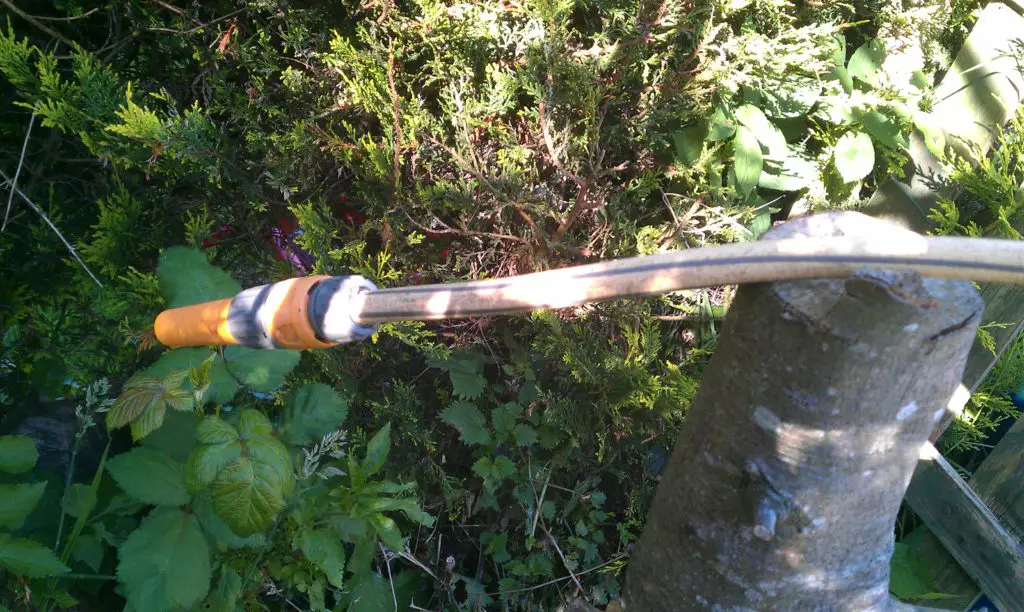
Can it be too rainy for gardening?
If you experience particularly rainy spells and heavy downpours where you live then this can hurt your crops too.
Overwatering can cause the roots of your plants to rot if they become waterlogged. Your plants need to be able to drain out properly to prevent this from happening.
You should be fine if your container has holes in the bottom of it. However, I know that some plant pots don’t have this feature. I’m mostly talking about ceramic plant pots in this instance.
Should gardeners worry about frost?
The weather can be unpredictable and fluctuate even in warm weather countries. You will need to put measures in places when the weather isn’t going your way.
Frost will harm and even kill your plants in the winter months. They may be too weak to withstand the elements. This is a big killer of young plants in their first or second year.
If you suspect that your plants won’t survive then you should bring them indoors. I advise that you continue this until Spring begins like I have in the past.
How much sunlight will my plants need?
The more sunlight they can get, the better. Your crops will need at least 6 hours of direct sunlight everyday. Pick a spot on your plot that you know gets good sun exposure and place your neediest plants there.
You can detect this if you spend the day outside in your yard on a clear day. You will begin to see which parts of your garden get the most sunshine at different times of the day.
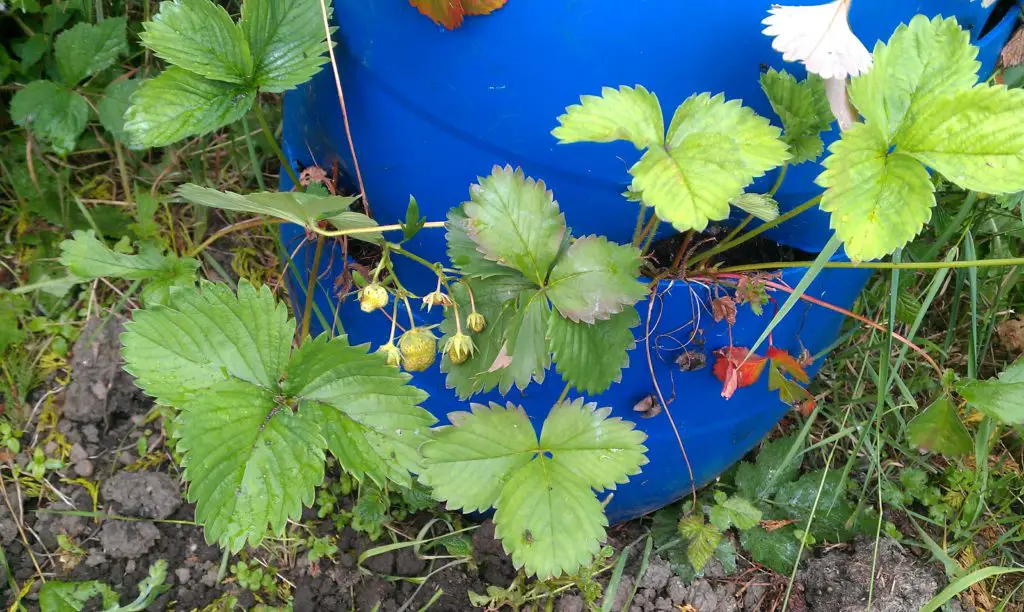
Is positioning important when it comes to sunlight?
I have discovered that it’s a great idea to be very strategic about where you place your plants. This is wise in terms of acquiring sunlight.
You might have a strawberry plant and an apple tree close together. Common sense dictates that you will want to put the tallest plant behind the shorter one in relation to the sun.
If you put the apple tree front and center then its branches and leaves will spread out. It will then devour all the sunshine while the plants in the back suffer. I’ve seen this happen all too often.
It’s a bit like the world’s tallest man standing in the front row of a Rolling Stones concert. The experience is ruined for everyone behind him. This is kind of a silly analogy, but you get my point.
New plants and seedlings will be the neediest in terms of sunlight. Place them in the brightest part of your garden. Older and hardier plants can withstand darkness for a little while so they shouldn’t be your top priority.
One disadvantage of indoor plants is the lack of sun that they generally get. You might want to use a heat lamp or something similar for those ones.
How often do I need to water my plants?
I find the amount of watering will vary from plant to plant. You might experience months of zero rainfall. If this happens then I suggest that you water your crops once a week at the very least.
Lack of water can cause the skin of your fruit and vegetables to split which could spoil them. Over-watering can cause the roots of your plant to rot as I’ve already mentioned.
Watering cans are best for watering indoors or inside a greenhouse as spillage is less likely. A garden hose is better for the outdoors as you won’t have to waste time refilling.
It’s best to water around the plant instead of on top of it. The water can easily burn and scorch the leaves if they come in direct contact on a hot day.
For this reason, you might want to delay watering for late afternoon or early evening. The sun will be less powerful at these times.
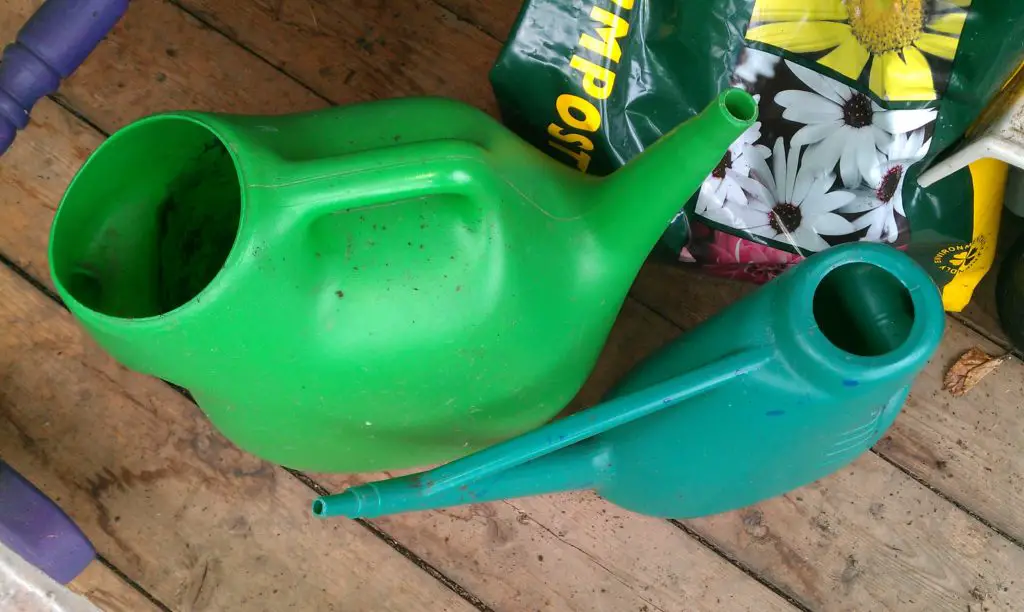
Does rainfall mean that I don’t need to water my plants?
Being the lazy gardener that I am, this would be great if true. Unfortunately, it’s not. Although, you don’t need to worry about watering some outdoor plants as frequently.
The natural rainfall will be enough to sustain them without additional watering on your part (but not always). Indoor plants will obviously not feel the effect of rainfall so these will need regular watering by hand.
What equipment do I need for gardening?
In my view, there is no need to buy that much special gardening equipment. The most important things such as the sun, earth and rainwater are free of charge.
I’ve already spoken about this but it might be a good idea to buy plant food and rooting hormone to improve your chances of success.
Products like these are particularly useful if you are trying to propagate another plant. I will talk you through propagation more in-depth a little later on in this post.
Wheelbarrows are great for transporting a large quantity of items around your plot at once. This will make you much more productive and save you time.
This piece of equipment has been a great help for me on multiple occasions. They are also good if something is too heavy or time-consuming to carry by hand.
Try to obtain secateurs and garden shears so that you can prune your plants. Additionally, you can use them for cutting through the thick roots of weeds that are too stubborn to pull out.
You will need a large garden digging fork for digging up weeds and turning over soil. You should also get your hands on a spade, shovel and a hand trowel. These three items are most useful for moving soil around. You can also use them when you want to dig holes for planting new crops and seeds.
Do I need any special clothes or accessories for gardening?
I recommend that you wear old clothes that you don’t mind getting a little dirty when gardening.
You should consider wearing boots of some kind to ensure you don’t ruin your other shoes. These can be rubber boots (wellington) because of their waterproof properties.
Although, I own some hiking boots that I also use for gardening. I wear thick socks with them too in order to protect my feet from blisters.
You should also consider getting some thick gardening gloves to protect your hands from thorns and nettles.
You can easily sting your hands pulling out prickly weeds and picking your ripe fruit and vegetables. They will prevent your hands from getting dirty as well.
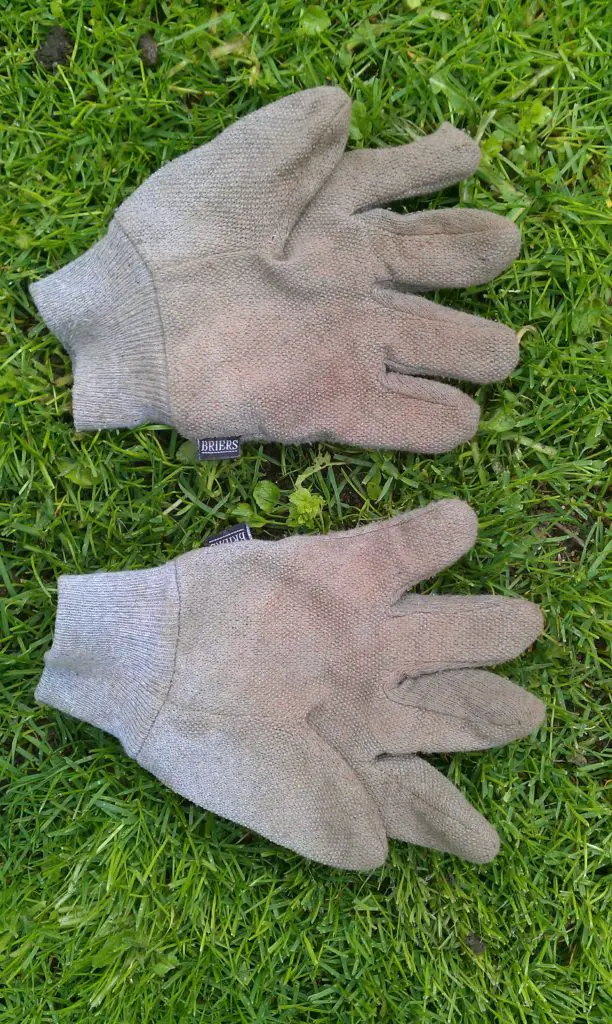
Which method of planting should I choose?
All three below ways of growing food have their pros and cons. You will need to weigh up your options to see which one suits you the most. Let’s take a gander.
Why should I plant straight into the ground?
The ground in your plot will obviously get a lot of natural moisture from the surrounding earth. You can afford to neglect on the watering at least for a short while.
If you plant something straight into the ground then it’s unlikely that you will ever have to move it. You won’t need to transplant it anywhere else ever again if you pick the ideal spot.
The ground is really the best place for a plant. It is where it should end up eventually anyway as it grows into an adult plant.
The plant won’t be short on space so it will have all the room it needs for the entire duration of its life. You can’t say the same thing with plant pots or raised beds which are more like temporary homes.
Another problem with raised beds and containers is that they don’t have that much depth. A reasonable amount of depth is required for growing potatoes, carrots or any other food like that. Only a decent-sized plot of land can do the trick.
Planting into the earth by your feet also means you don’t have to waste time or money obtaining raised beds and plant containers.
Why should I plant in a raised bed?
If you don’t have that much natural soil on your plot then raised beds are a good alternative for growing food. They are very simple to make as well. Raised beds can be made out of all sorts of materials such as:
- wood
- rocks
- bricks
You can use these or anything else that will hold a rigid shape. I once made one out of old railway sleepers so anything is possible.
You may not have a lawn or plot of earth that you can dig up. In this case, you can create a raised bed with a few bags of compost. Apply this together with a border to go around the perimeter.
It means you don’t just have to rely on plant containers for your gardening needs. This all makes life easier if you don’t have a proper garden. to call your own.
Why should I use plant containers?
An advantage of individual plant containers is that the soil will warm up quicker. This is doubly true if you use a plastic one.
The flip-side is that it will dry out a lot faster so it will need extra watering if a particularly dry spell occurs.
This is because it doesn’t join up with a large mass of land so it can’t absorb the surrounding moisture. A plot of land has a bigger surface area to hold lots of water for longer.
Containers are ideal for plots with poor drainage capabilities. You know exactly where the water is coming from and going to with a plant pot. I have found that you are less susceptible to pests with a container too.
It’s easier and more convenient to transport plant pots. You won’t need to dig them up out of the ground (obviously). You can just move them at leisure, indoors or outside.
Containers are perfect for small plants that don’t need tonnes of earth or space to live in. This will leave some extra room in your outdoor beds. There may be much bigger gardening projects you might want to attempt like root vegetables, for instance.
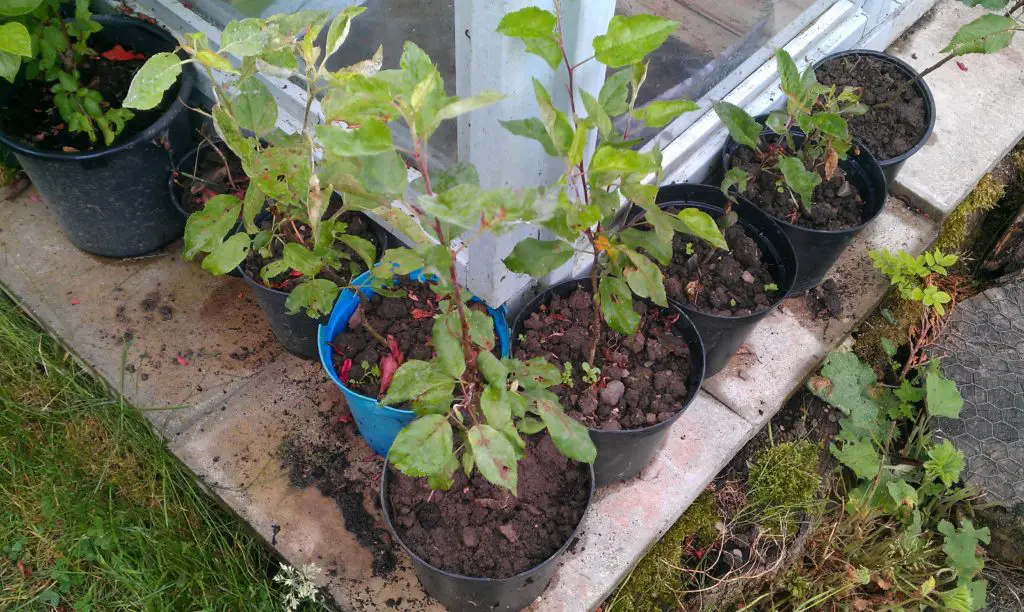
Which plant containers should I use for growing food?
Containers are manufactured in all sorts of materials for different reasons. These materials will react to different conditions in different ways, for better or worse.
There is rarely ever a perfect all-round plant container. There isn’t one that will do exactly what you want it to do all the time. Believe me, I’ve tried.
Why should I use metal plant containers?
You can use metal plant pots. Although, you must be aware that they will conduct cold and heat more efficiently than you might like. It can be like two extremes at opposite ends of the spectrum.
Sort of like when the shower is either too hot or too cold. Somehow it will never a bearable temperature that doesn’t make you scream in agony.
Anyway, overusing metal containers in extreme weather conditions could really hurt the growth and well-being of the plants. Keep an eye out.
Why should I use plastic plant containers?
Plastic plant pots are lighter, less fragile and tend to hold moisture better than terracotta or clay pots. You will need to tweak watering frequencies in order to combat these differences.
Plastic containers are more cost-effective and store heat better. They are my personal favorite out of all plant pots.
The lightweight properties of plastic mean that you can carry them around your garden with ease. It feels less like back-breaking work.
The fact that plastic is less cumbersome would clearly be a benefit. This is relevant if you are moving your containers around a lot. It’s not a priceless antique vase so it doesn’t matter if you drop them either. There won’t be any significant damage done.
Why should I use ceramic plant containers?
Ceramic plant pots are better at fighting frost because of the amount of insulation they provide. However, they dry up the soil easier that other materials.
I’ve already talked about this but some ceramic containers don’t have drainage holes in the bottom. This can cause all manner of problems considering how important drainage is in gardening.
It’s tricky trying to drill holes too. There is a high chance of the whole thing shattering if you even attempt to do that. This is both hilarious and tragic. You may just make things worse for yourself. The lack of holes will mean the water will have nowhere to escape to.
In freezing temperatures, porcelain can crack. This is due to the pressure of having residual frozen water inside the container. I know this because it happens to me on occasion.
If I were you, I would avoid ceramic plant pots altogether. They seem to be more trouble than they’re worth. I think the reason they are popular is because they look nice aesthetically which I get. Whereas plastic can appear tacky to some gardeners.
